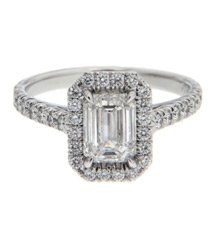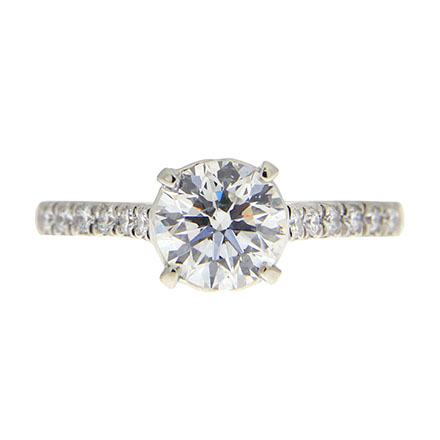Neutral tones coordinate with all other colors. With diamond rings, the most common of these tones are whites and greys. The former comes from the gemstones, and the latter from various precious metals. As with other hues, neutral colors are subject to trends and individual preference.
Platinum gets its name from the Spanish “little silver.” It has a glossy light grey hue. Platinum’s mechanical properties allow the metal to be stretched and compressed to the finest degree. Jewelry made from the metal may look as delicate as lace yet still hold strong.
White gold has an appearance similar to platinum and silver. The metal’s naturally yellow hues fade when mixed with certain ingredients. Palladium, zinc, copper and other materials help give white gold its characteristic tones. For the budget conscious, white gold engagement rings are more affordable than platinum.
Diamond color is graded on a scale of D to Z. The closer a diamond is to D, the fainter its hue. Due to the white light that provides brilliance, low color gems are sometimes called “white.” People who enjoy neutral tones may want to focus on diamonds in the D-F range.
Connoisseurs looking for unique engagement rings may enjoy rings that use neutral shades for contrast. These include white gold diamond bands with yellow or rose gold prongs for a pop of color. White diamonds mounted in yellow gold play well against one another. Whatever you select, it should please your eye.






